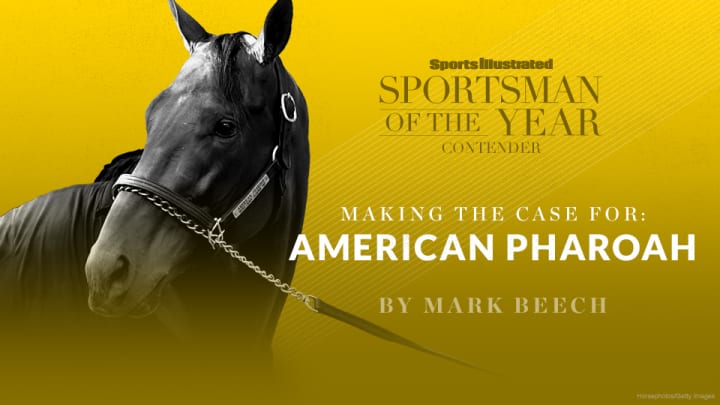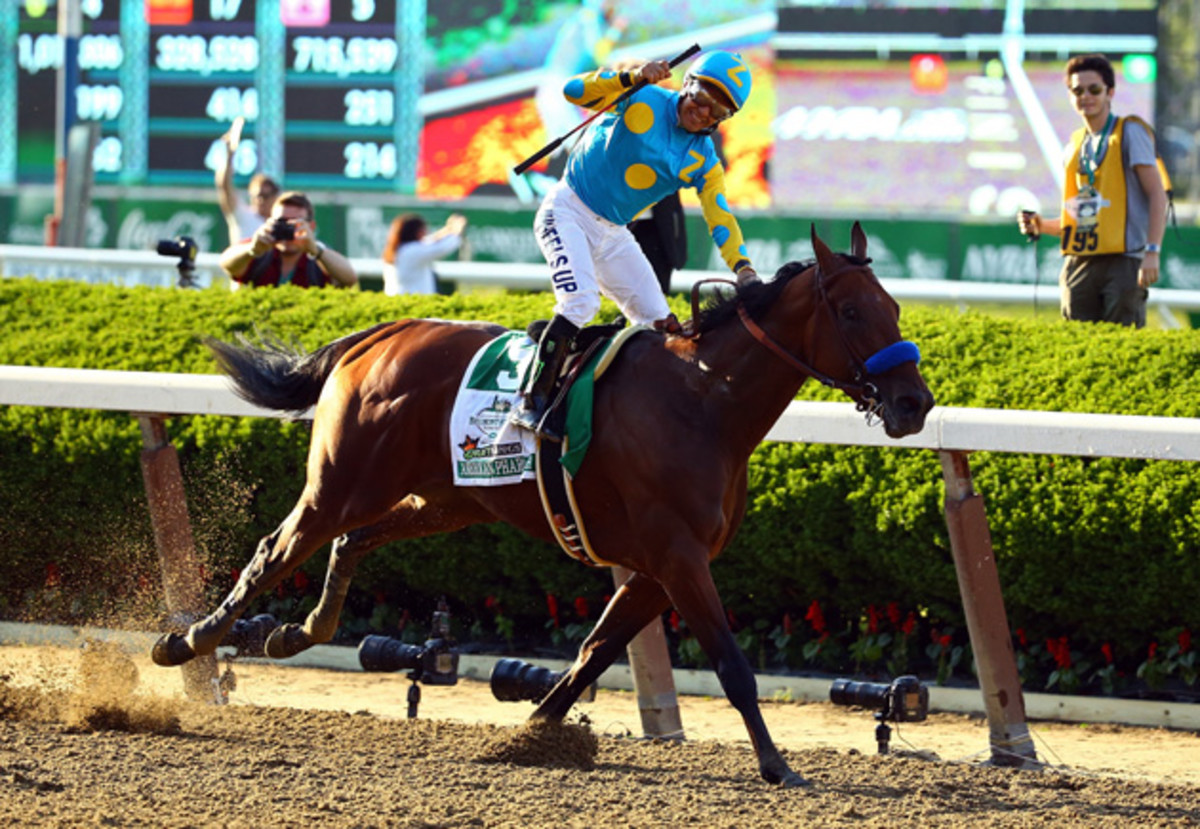The case for American Pharoah for SI's 2015 Sportsman of the Year

American Pharoah is one of the leading contenders for Sports Illustrated's 2015 Sportsman of the Year. You can see the full list and the entire series of essays that make the argument for each candidate here. This story also appears in the Nov. 16, 2015, issue of Sports Illustrated. To subscribe, click here.
It didn’t have to end this way. American Pharoah could have stopped racing after he won the Belmont Stakes on June 6, and he still would have been on the short list to be the first horse ever to win Sports Illustrated's Sportsman of the Year award. The 3-year-old thoroughbred colt had just won the first Triple Crown in 37 years—having swept the Kentucky Derby, the Preakness and the Belmont over five magical weeks in the spring—and in so doing had captivated a nation and ended decades of frustration in a sport that had begun to think it might never see his like again. He could have begun his lucrative career as a stallion on the highest of notes, with the roar of 90,000 fans still echoing around the rafters at Belmont Park. Out of racing and into history.
But thanks to his owner, Ahmed Zayat, and his trainer, Bob Baffert, American Pharoah kept running—and winning. On Aug. 2 he romped in the Haskell at Monmouth Park in New Jersey. On Aug. 29, in Saratoga, N.Y., he lost by three quarters of a length in the Travers, after getting cooked in a speed duel that left him empty in the final furlong. He returned on Oct. 31 and rolled to a 6½-length victory in the $5 million Breeders' Cup Classic (the main event of racing's world championships and the last major race of the year), at Keeneland in Lexington, Ky. He is the first horse to sweep the Triple Crown and also win the Breeders' Cup Classic. He went out in style, having done something no other racehorse ever had.

In the Classic, American Pharoah earned the winner's share of $2,750,00, bringing his career earnings to $8,650,300, the seventh-highest in history. His winnings, however, pale in comparison to what he is worth in the breeding shed. Last week Ashford Stud announced that it had set American Pharoah's stallion fee at a princely $200,000 for a guaranteed live foal. (If the breeding fails to produce a baby, the stallion and the mare breed again for no fee.) The leading sire of 2014 was Tapit, who stands at Gainesway Farm in Lexington for $300,000. According to The Jockey Club, Tapit was bred to 164 mares last year. If American Pharoah covers that many in '16, he will bring in a very cool $32,800,000. The lifespan of the average thoroughbred is 25 to 30 years. That's a lot of hay.
There was no other display of sportsmanship in 2015 that came close to what Zayat and Baffert did with American Pharoah. Horse racing is a dangerous sport, and all it would have taken was one bad step to turn his story into a tragedy—an unimaginably expensive tragedy. Zayat, who had sold Pharoah's breeding rights last winter for a reported $9.8 million, plus an extra $4 million for winning the Triple Crown, to Ireland-based Coolmore Stud, but who shrewdly retained control of the colt's racing career through the end of the year, insisted that he keep running because "our sport needs stars."
It fell to Baffert to not only keep American Pharoah racing, but also to keep him winning. The Triple Crown went unclaimed for 37 years in large part because it is a relic of another time. Horses today are bred to sprint, not to race the classic distances of the Triple Crown series. They also aren't trained to run so far three times in five weeks. Just as there is no precedent for what Pharoah accomplished in 2015, there is also no price that can be put on what Zayat and Baffert gave to sports fans.
American Pharoah wasn't perfect in 2015. But he won seven of his eight starts, including the most important races, and he won them with grit and joy and élan. And he was still running at the end.

